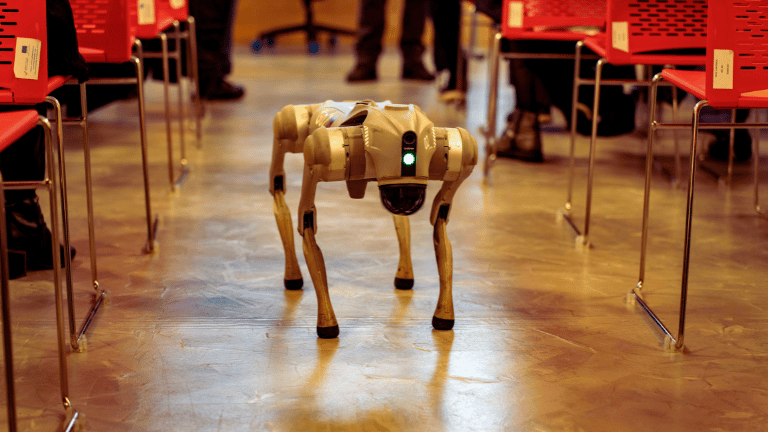Application
Discover how Matrix Array Sensors improve ergonomic seating by providing real-time pressure mapping for superior comfort, posture support, and durability.


Optimizing Ergonomic Seating with Matrix Array Sensors: Precision Comfort & Support
The Science Behind Ergonomic Seating: Why Pressure Matters
Ergonomic seating plays a fundamental role in health, comfort, and productivity. A well-designed seat promotes even weight distribution, proper posture, and reduced physical strain, while a poorly designed one can lead to discomfort, fatigue, and long-term musculoskeletal issues.
Traditional seating design relies heavily on subjective feedback and standardized cushioning materials. However, real-world use varies significantly between individuals. Matrix Array Sensors offer a data-driven approach, providing precise pressure mapping insights to refine seating geometry, support zones, and cushioning materials.
By integrating advanced pressure sensor technology, businesses developing ergonomic solutions can quantify comfort, reduce pressure points, and create optimized seating solutions tailored for real-world users.
How Matrix Array Sensors Optimize Seating Design
1. Pressure Mapping for Intelligent Seat Contouring
Traditional seating development often involves trial-and-error adjustments. Matrix Array Sensors streamline this process by providing detailed, real-time pressure distribution data. This allows for:
- Accurate identification of pressure imbalances that cause discomfort.
- Refined contouring of seat cushions to better support different body shapes.
- Improved material selection for enhanced durability and responsiveness.
2. Postural Support & Spinal Alignment
Proper posture is essential for reducing strain on the lower back, improving circulation, and preventing fatigue. Pressure mapping sensors provide a scientific basis for optimizing:
- Lumbar support placement to ensure healthy spinal alignment.
- Seat depth adjustments to balance thigh support and avoid pressure buildup.
- Dynamic adaptability to different seating positions, ensuring continuous ergonomic support.
3. Reducing Pressure Points & Enhancing Comfort
Pressure points develop when body weight is unevenly distributed, leading to numbness, discomfort, and poor circulation. Matrix Array Sensors:
- Identify areas of excessive pressure, allowing engineers to adjust cushioning density.
- Validate seat design changes based on real-world pressure distribution data rather than assumptions.
- Improve long-term seating comfort by creating balanced support across the seat and backrest.
Real-World Applications of Pressure Mapping in Seating Design
1. Office & Workstation Chairs
Challenge: Extended sitting leads to postural misalignment, back pain, and reduced productivity.
Solution: Pressure mapping ensures better lumbar support placement, seat depth adjustments, and weight distribution for long-term comfort.
Outcome: Reduced workplace fatigue, improved spinal health, and increased efficiency.
2. Automotive Seating & Transportation
Challenge: Long drives can cause seat discomfort, lower back pain, and circulation issues.
Solution: Matrix Array Sensors help refine cushioning materials, adjust seat positioning, and enhance lumbar support for drivers and passengers.
Outcome: Improved ride comfort, reduced fatigue, and enhanced driving safety.
3. Medical & Rehabilitation Seating
Challenge: Patients with limited mobility are prone to pressure ulcers and discomfort from prolonged sitting.
Solution: Real-time sensor feedback allows for adjustable seating configurations tailored to individual patient needs.
Outcome: Reduced risk of pressure sores, improved recovery support, and enhanced patient comfort.
Advantages of Matrix Array Sensors in Seating Development
- High-Resolution Pressure Data – Enables real-time insights for immediate ergonomic improvements.
- Fatigue Prevention & Comfort Optimization – Ensures proper weight distribution to minimize discomfort and strain.
- Precision-Engineered Seat Contours – Helps fine-tune seating geometry for maximum spinal support.
- Data-Driven Design Validation – Reduces guesswork and allows quantifiable improvements in seat performance.
Shaping the Future of Ergonomic Seating
The future of ergonomic seating is moving beyond static design principles toward adaptive, data-driven solutions. By integrating Matrix Array Sensors, businesses can refine their seating designs with real-world pressure insights, leading to improved comfort, support, and long-term user satisfaction.
As technology continues to evolve, pressure mapping will become a standard tool in seating development, allowing manufacturers to validate and enhance ergonomic performance with precision.
Latest Insights
Collaboration Begins Here.



